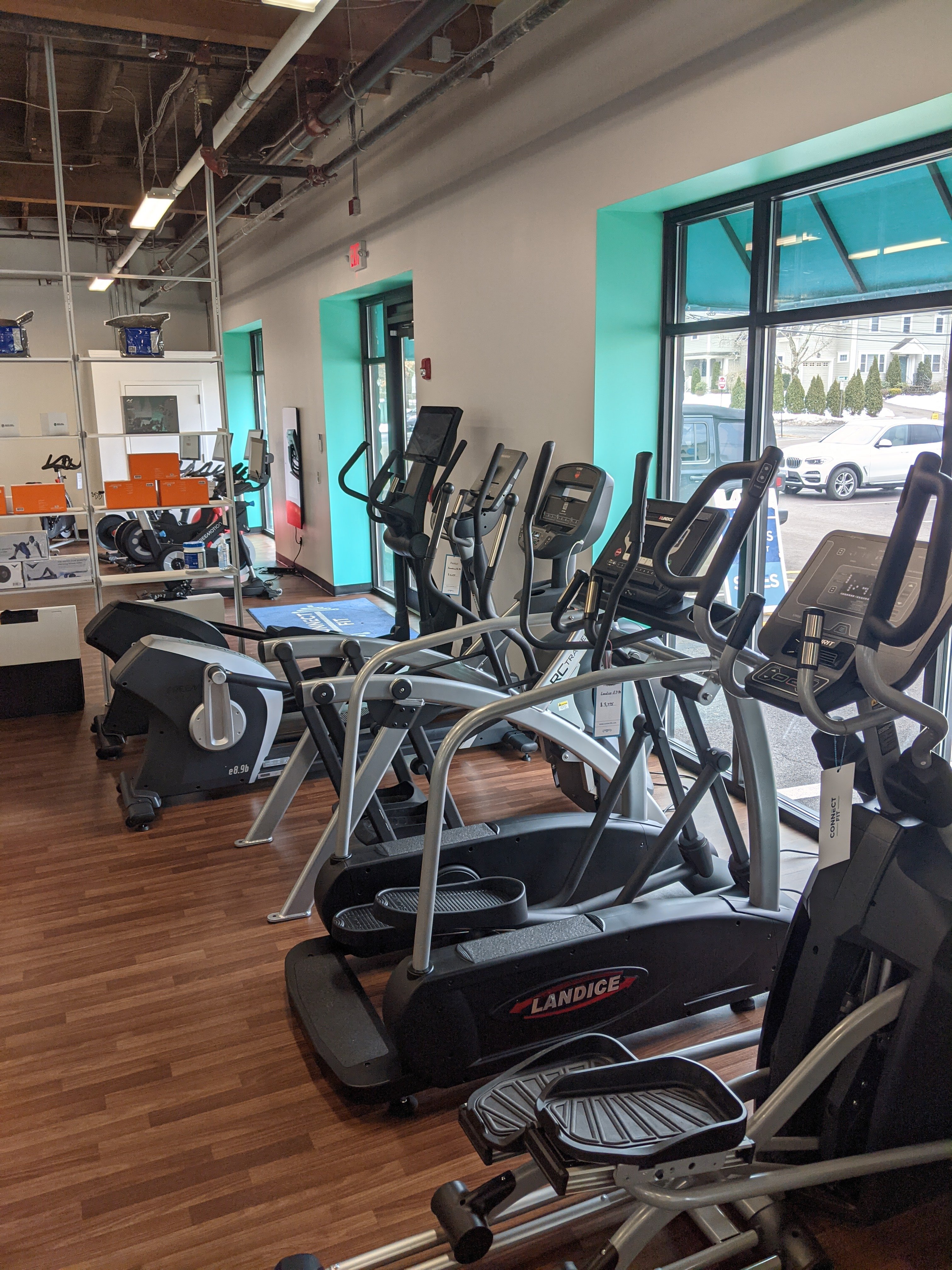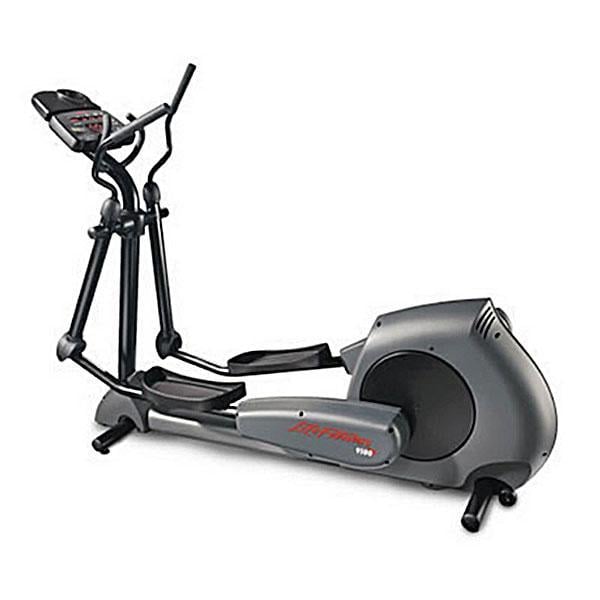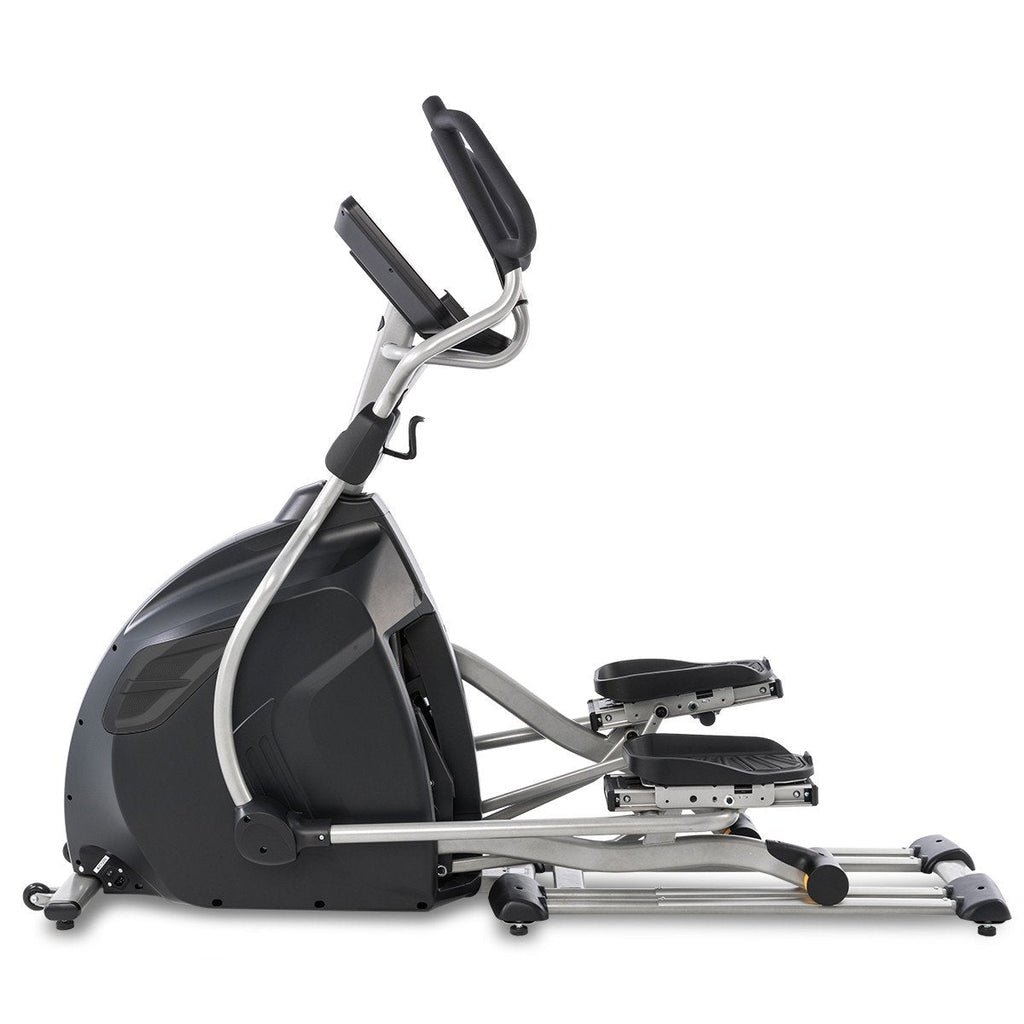Recently, a client was referred in by their trainer, to get help in purchasing an elliptical machine. And it was definitely a conversation that we had to restart a few times. Frankly, the client had been reading up on reviews online and didn't know that every review site They'd been looking at was an affiliate site, sites that get paid to promote a brand. Not really review sites at all, they get a 8 to 12% commission when you click through their site. So the client had read wonderful reviews on junk, the lower-end department store brands that populate those affiliate sites.


But purchasing an elliptical machine is a lot harder than purchasing any other type of cardiovascular equipment. They're a lot less straightforward than treadmills or bikes or rowing machines or anything else. There are different styles and actually, different generations of these machines. And understand, that one thing you are purchasing when you buy an elliptical machine is the patenting they use.
And this is one of the reasons why the connected fitness side of the industry really hasn't caught up here, by the way. There are almost no elliptical machines with content and big screens because there are so many different styles, rear-drive, front-drive, center drive, and then the alternative motions.
But it also means that this is a good place for a blog since I've helped design elliptical machines with a number of vendors, and been part of the industry for over 25 years as a former Chief Product Officer.
Elliptical machines can also be called 'Non-Impact Gait Simulators', to understand them best. But most clients think of them as 'Elliptical Machines', even though some of the motions are not elliptical. And they are best understood by their generation. That's the first secret, that elliptical machines have specific generations that improved the workout and biomechanics over time. It only makes sense, as the technology changed.
First Generation
The original elliptical machines were rear-drive systems, based on the Miller patent. Precor was the first of them and the patent holder. They were rear-drive with ramps on them, that allowed for incline. No upper body, just a lower-body machine with incline, trying to pretty much replicate a treadmill without the impact.
.jpeg?width=231&name=download%20(30).jpeg)
The original elliptical machines were rear-drive systems, based on the Miller patent. Precor was the first of them and the patent holder. They were rear-drive with ramps on them, that allowed for incline. No upper body, just a lower-body machine with incline, trying to pretty much replicate a treadmill without the impact.
.jpeg?width=231&name=download%20(30).jpeg)
And there's a lot of things they did well, but they definitely overstated the calorie counts, and there was a certain amount of people leaning forward too much like a stepper. OK, a lot of people.
Second Generation
The second generation of elliptical machines was mainly still rear-drive, With a few front-drive machines like CCS-Reebok, but the main feature of second-generation elliptical was the addition of the upper body motion. Most of them lost the incline with the upper body, and they started calling them 'Cross Trainers' because they had the upper body and the lower body going at the same time. The upper body fools a lot of people because you actually don't burn a lot more calories with the upper body added in. Actually, any effort put into the upper body is removed from the lower body. However, you can work out longer by splitting the load that way so there is a definite benefit from having the upper body going along, as well as more muscles requiring oxygen.

Third Generation
The third generation of elliptical machines is when they discovered how to build a cantilevering effect into the pedals, so they were able to use more front-drive and center-drives. It's not that front and center is better or worse by itself, by the way. The third generation is also when you start seeing tighter pedal spacing in terms of the width, because somebody finally figured out that women have hips.
it's funny, and we can laugh about it, but the original elliptical machines definitely had that pedal spacing way too wide for the inward-facing Q-Angle of most female bodies. So the third generation is also when they started being easier for women to use because they brought the pedals closer together.
The last feature from the third generation is huge. This is when they started using adjustable stride length as the primary motion adjustment instead of incline. When you incline an elliptical machine it definitely hits different muscles, which is nice, but adjustable stride length hits different muscles and fits different size people, so that's definitely an advantage of the adjustable stride length over incline.

The last feature from the third generation is huge. This is when they started using adjustable stride length as the primary motion adjustment instead of incline. When you incline an elliptical machine it definitely hits different muscles, which is nice, but adjustable stride length hits different muscles and fits different size people, so that's definitely an advantage of the adjustable stride length over incline.

Fourth Generation
The fourth generation of non-impact machines is when they started creating alternative motions. The first of these was the Cybex Arc trainer, followed by the Precor AMT, the Octane lateral x, The Octane zero runner, and a few other machines.
The fourth-generation machines are also something I call "End-In-Mind' machines. Because all of the machines were built to do something different than a traditional elliptical. The AMT mechanism allows a user to create more of their own motion, but it definitely is harder on the knees than a traditional elliptical machine, as there's more knee-over-toe or sheering angle on the patella.
The Lateral-x is a very cool machine that allows literally a lateral component in the elliptical motion. And it hits the adduction and abduction muscles at the same time. And almost no other machine even touches those muscles, so the Lateral-X is great.
But the crown jewel of the fourth generation is that arc trainer. It's a completely different motion and a completely artificial motion, but the knee never passes over the toe, the upper and lower body work isolaterally instead of contralaterally and it's been shown to be easier on the knees, easier on the hips, easier on the back, and it produces a higher calorie burn and greater muscular activation in the gluteal muscles and the hamstring. It is possibly the king of the non-impact cardio world.
I could go on for hours about the minutia of the pivot points in the upper body, the effect of a user's height and weight in using these machines, and more, but this is long enough! If you have any questions, please feel free to ask them! We love this stuff, and we love helping our clients.




COMMENTS